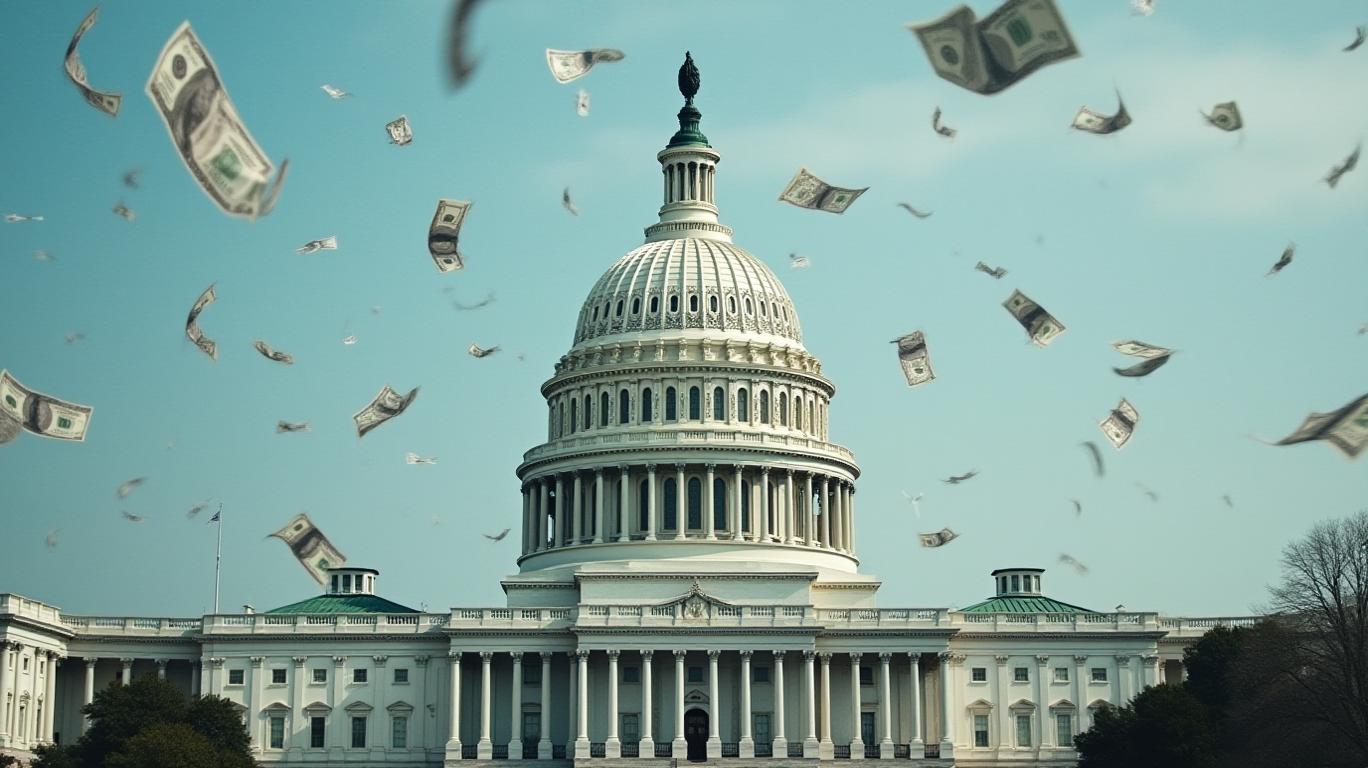The US's AA Rating: A Balancing Act Between Strength and Risk
The United States’ long-term credit rating has once again come under scrutiny, with Scope Ratings affirming the nation’s AA rating but maintaining a Negative Outlook. This decision reflects a stark duality: the world’s largest economy retains unmatched strengths, yet persistent fiscal and political challenges threaten its creditworthiness. Investors must navigate this tension to gauge the implications for markets, interest rates, and global capital flows.

The Pillars of US Strength
The US’s AA rating is anchored by its economic might and institutional resilience. With a GDP of over $28 trillion, the US economy remains the global engine of innovation and consumption. The dollar’s dominance—comprising 65% of global allocated foreign exchange reserves—ensures unparalleled access to capital. This liquidity buffer allows the US to finance its debt at historically low yields, even as public debt climbs.
The Federal Reserve’s credibility is another pillar. Its inflation-targeting framework and independence have maintained price stability despite recent volatility. Meanwhile, the depth of US financial markets provides a safety net against external shocks. These factors, combined with the US’s role as a global leader in technology and services, underpin its economic resilience.
The Debt Ceiling Dilemma
Yet, recurring fiscal brinkmanship threatens this stability. The debt ceiling, which will return as a political flashpoint on January 2, 2025, has become a recurring source of uncertainty. Historically, Congress has always raised or suspended the limit, but Scope warns that repeated last-minute resolutions erode confidence. The rating agency now views the debt ceiling as incompatible with the stability expected of an AA-rated sovereign.
Scope forecasts the US government’s debt-to-GDP ratio will rise to 134.2% by 2029—a level far exceeding that of peers like Germany (65%) or Canada (38%). This trajectory is driven by persistent deficits averaging 7.7% of GDP annually, with net interest payments alone consuming 13.4% of federal revenues by 2026. Without structural reforms, these trends could push the US into a downward credit spiral.
Political Polarization and Fiscal Gridlock
The US’s governance challenges amplify these risks. The 2024 elections deepened partisan divisions, complicating bipartisan solutions to fiscal policy. Scope highlights that unresolved disputes over spending, taxation, and entitlement programs could lead to government shutdowns or legislative paralysis. Such instability undermines the US’s ability to address long-term liabilities, including unfunded pensions and healthcare obligations. When accounted for, these contingent liabilities push total public debt to an estimated 260% of GDP—exceeding even Japan’s 256%.
External and Structural Weaknesses
Beyond governance, the US faces economic headwinds. Long-term growth has slowed to 1.5%, constrained by an aging workforce and stagnant productivity. Income inequality and weak wage growth limit consumption-driven recovery, while rising global interest rates strain borrowing costs. Meanwhile, financial deregulation and overvalued asset markets pose systemic risks, particularly if the Fed’s tight monetary policy prolongs.
Triggers for Action
Scope’s Negative Outlook hinges on specific triggers. A downgrade could follow if:
- Congress fails to eliminate the debt ceiling or enact fiscal safeguards.
- Debt ratios breach 140% of GDP, or contingent liabilities materialize (e.g., federal bailouts for state pensions).
- The dollar’s reserve status erodes due to geopolitical shifts or policy missteps.
Conversely, bipartisan reforms to stabilize debt, reduce polarization, or modernize entitlement programs could stabilize the outlook.
Implications for Investors
The Negative Outlook signals that US Treasuries—long considered a risk-free benchmark—may no longer be immune to downgrades. While the dollar’s dominance and market access provide near-term buffers, investors should prepare for higher yields and reduced demand for Treasuries if creditworthiness declines.
Meanwhile, sectors tied to fiscal policy—such as healthcare, infrastructure, or defense—could see volatility as political battles over spending intensify. Equities, too, may face pressure if corporate borrowing costs rise alongside Treasury yields.
Conclusion: A Race Against Time
The US’s AA rating with a Negative Outlook is a call to action. The nation’s economic fundamentals remain enviable, but without resolving the debt ceiling, curbing deficits, or addressing governance fractures, further downgrades are likely. Scope’s projection of a 134.2% debt-to-GDP ratio by 2029 underscores the urgency of reform.
Investors must weigh the US’s structural strengths against its fiscal risks. While the dollar’s global role and Fed credibility buy time, the path to stabilization demands political will. Without it, the US’s credit profile—and its position as the world’s economic anchor—could fray irreversibly.
The coming months will test whether lawmakers can rise above polarization to secure fiscal stability—or let the Negative Outlook become a self-fulfilling prophecy.

Comments
No comments yet